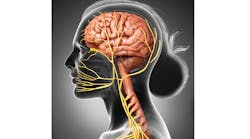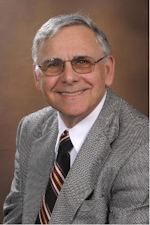Decades ago, when I started my dental practice, I occasionally encountered perplexing patient pain issues. More than once I completed what I believed to be a successful root canal treatment, but the patient reported severe postoperative pain. Naturally, I repeated the treatment, for if the patient had pain, there must have been something wrong with my technique—though I had no idea what it could be. When the pain did not subside, I referred the patient to an endodontist who repeated the treatment and later did an apicoectomy. Ultimately, the tooth was extracted. In one case, the pain disappeared after the extraction, and in another case, the pain remained after tooth removal. I assumed from those experiences that root canal therapy does not work for everyone.
Another time a patient presented with tooth pain. A clinical exam of the tooth and surrounding area and a radiograph indicated that there was no dental pathology. The only time she experienced tooth pain was when she was chewing food. I assumed that the patient had some psychological problems, but I did refer her to an endodontist, who later informed me that he could find no reason for the pain.
You may also be interested in ... The circadian rhythm and dentistry: Is there a connection?
Another remembrance is the patient who presented with complaints of a burning tongue. She had burning pain when she awoke, which gradually worsened as the day progressed. She reported that food no longer had a normal taste. As I did not know how to manage the problem, I suggested she see a physician. She said that she had already seen five and none had offered a treatment solution.
Those were the ones I remember. There must have been others whose pain I could not resolve.
Thirty or more years later, while screening patients in a dental school with a colleague, I encountered a patient who would be a candidate for a partial denture except that she had issues with opening her mouth. I told my fellow examiner that this patient could not be seen by an undergraduate because of a TMJ problem. He said she should be sent to the orofacial pain department for treatment. I had been teaching in the school for two years and did not know there was such a department. I was curious about what that department did and arranged to spend some time there. It turned out to be an eye-opening experience for me.
I was intrigued with the treatments that I saw. In the clinic, they were treating patients not only for TMD but also for a variety of pain issues involving the neck, face, and head. I enrolled in a training program, became a teacher, and later took the Academic Orofacial Pain Boards to become a credentialed specialist. Now I have the designation diplomate of the American Board of Orofacial Pain.
What to call an orofacial pain specialist is actually a dilemma that our association is attempting to figure it out. Neurodontist? Cephalodontist? Orofacialdontist? Other suggested names are orofacialist, orodontist, ododorist, OFPainist, and an OFDolorist.
What preparation is required to become an orofacial pain specialist?
The orofacial pain curriculum focuses on pharmacology, neuroanatomy, neuronal pain pathways, neurology, muscle physiology, structural knowledge of brain stem and the brain, the somatosensory nervous system, continuing updates on pharmacology, and common orofacial pain diseases.
There is significant emphasis on clinical diagnoses in order to identify obscure orofacial diseases. We learn about pulmonology so we can treat obstructive sleep apnea with appliance therapy. We learn about diagnostic medical and CPT coding. The curriculum covers the location of the cranial nerves and their function and how the body creates spinal fluid and melatonin.
There is constant review of physiology and the functions of the sympathetic and parasympathetic autonomic systems. Clinical training on the treatment of trigeminal neuralgia and TMD issues—especially those associated with muscle pain—is included. There is training on differential diagnosis to distinguish between the many varieties of headache, including migraine, and how to diagnose so-called “dental phantom pain,” where there is tooth pain but no diagnosable tooth pathology.
What do OFP specialists do?
When dentists hear about an orofacial pain specialist, they are likely to think of a dentist who specializes in TMD issues or someone who makes appliances. However, OFP specialists do much more, including prescribing antivirus and analgesic cortisone-type medications. We provide trigger point injections, nerve block injections, neuropathy treatment with medications, and Botox injections for muscle pain, and we diagnose systemic conditions that mimic TMD pain. Patients receive prescriptions for blood work, which are reviewed by orofacial pain dentists.
We are kind of like neurologists of the face. Our practice is much like medical practice. Medical insurance forms are completed for the patients. Dental insurance is not used, as it does not apply for what we do. Some of our offices are set up without traditional dental equipment.
A common type of patient we see is one who has been treated for what appears to be dental pain, incorrectly diagnosed. Some have had multiple root canal treatments on one side of their jaw for the purpose of eliminating pain. The problem is that the patient had nonodontogenic pain, unrecognized, or rather, undiagnosed. Such pain is referred to as neuropathic pain and will not respond to regular dental treatment. Dental procedures ameliorate somatic pain.
We can help general dentists a great deal by giving a name to the pain they see that does not make sense. As an example, a patient, medicated for trigeminal neuralgia by a neurologist, was seen by a dentist who could not treat a lower posterior tooth because the patient felt severe shocking pain when the dentist attempted to retract her cheek. He did not realize that he was activating a trigger zone by pulling on her cheek. The inner aspect of the patient’s cheek was painted with a topical anesthetic, which muted the trigger zone’s response. Pulling on the cheek now caused no problem, and we informed the dentist what to do to help the patient.
When a patient has pain that does not make sense, dental treatment should be avoided, for it can cause a lifetime of chronic pain.
Some conditions that OFP specialists diagnose or treat include:
- Trigeminal neuralgia
- Glossopharyngeal neuralgia
- Occipital neuralgia
- Geniculate neuralgia
- Facial shingles
- Postherpetic neuralgia
- Facial myalgia
- Myofascial pain
- Phantom dental pain
- Obstructive sleep apnea
- TMD treatment for myalgia
- TMD treatment for skeletal pain
- Migraine headache
- Tension-type headache
- Headache induced by referred muscle trigger points
- Toothlike pain from a midface migraine
- Toothlike pain from a sinus infection
- Lateral nasal numbness when the sinus membrane thickens due to a bacterial or viral infiltration
Orofacial pain specialists understand the many physiological aspects of pain. They can help you with diagnosing what appears to be the weird facial and head pains your patients may experience. When your patient’s pain is eerie, mystifying, or strange, avoid doing dental procedures and refer the patient to an orofacial pain specialist.
Editor's note: This article appeared in the June 2023 print edition of Dental Economics magazine. Dentists in North America are eligible for a complimentary print subscription. Sign up here.







